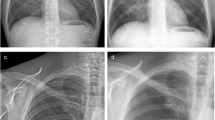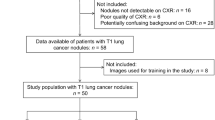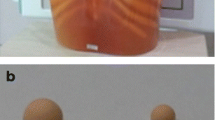Abstract
The purpose of the study was to compare the detection performance of a cathode ray tube (CRT) monitor versus a liquid crystal display (LCD) monitor for simulated subtle pulmonary lesions. Ten templates containing simulated lung lesions were superimposed on an anthropomorphic chest phantom. Posteroanterior radiographs were obtained using flat panel technology and were displayed on a CRT and an LCD monitor. Image processing and reading conditions were equivalent for both softcopy displays. Five observers assessed lesion detectability using receiver-operating characteristic (ROC) methodology. A multivariate test (Pillai trace) was used to test the significance of differences (P<0.05). The multivariate test revealed significantly different detection rates for the lesion types, but no significant difference between the two display modes. Detection performance for both monitors was higher for nodules and micro-nodules and lower for lines and patchy opacities. Analysis of lesion subgroups according to their location in lucent/obscured lung areas was also not statistically significant. Under ideal reading conditions, CRT and LCD displays perform equivalently for the detection of simulated subtle pulmonary lesions.

Similar content being viewed by others
References
Samei E, Seibert JA, Andriole K et al (2004) AAPM/RSNA tutorial on equipment selection: PACS equipment overview. Radiographics 24:313–334
Kundel HL, Gefter W, Aronchick J et al (1997) Accuracy of bedside chest hard-copy screen-film versus hard- and soft-copy computed radiographs in a medical intensive care unit: receiver operating characteristics analysis. Radiology 205:859–863
Kundel HL, Polansky M, Dalinka M et al (2001) Reliability of soft copy versus hard copy interpretation of emergency department radiographs: a prototype study. Am J Roentgenol 177:525–528
Brill PW, Winchester P, Cahill P et al (1996) Computed radiography in neonatal and pediatric intensive care units: a comparison of 2.5 K×2 K soft copy images vs. digital hard-copy film. Pediatr Radiol 26:333–336
O’Connor P, Davies AG, Fowler RC et al (1998) Reporting requirements for skeletal digital radiography: comparison of soft copy and hard copy presentation. Radiology 207:249–254
Badano A (2003) Principles of cathode-ray tube and liquid crystal display devices. In: Advances in digital radiography: RSNA categorical course in diagnostic radiology physics. pp 91–102
Roehrig H, Krupinski EA, Furukawa T (2001) Evaluation of a flat CRT monitor for use in radiology. J Digit Imaging 14:142–148
Pavlicek W, Owen JM, Peter MB (2000) Active matrix liquid crystal displays for clinical imaging: comparison with cathode ray tubes. J Digit Imaging 13:155–161
Roehrig H, Fan J, Krupinski EA et al (2002) LCDs versus CRTs: a comparative performance evaluation. Radiology 225(P):186
Haak R, Wicht MJ, Hellmich M et al (2002) Influence of room lighting on grey-scale perception with a CRT- and a TFT monitor display. Dentomaxillofac Radiol 31:193–197
Schaefer-Prokop CM, Prokop M, Schmidt A et al (1996) Selenium radiography versus storage phosphor and conventional radiography in the detection of simulated chest lesions. Radiology 201:45–50
Metz C (1987) Basic principles of ROC analysis. Semin Nucl Med 8:283–298
Otto D, Bernhardt TM, Rapp-Bernhardt U et al (1998) Subtle pulmonary abnormalities: detection on monitors with varying spatial resolutions and maximum luminance levels compared with detection on storage phosphor radiographic hard copies. Radiology 207:237–242
Pärtan G, Mayrhofer R, Urban M, Wassipaul M, Pichler L, Hruby W (2003) Diagnostic performance of liquid crystal and cathode ray tube monitors in brain computed tomography. Eur Radiol 13:2397–2401
Siegel EL, Reiner BJ (2002) Comparison of the clinical performance of a high resolution active matrix LCD to a CRT monitor in the assessment of lung nodules using computed radiography images. Radiology 225(P):501
Tong HS, Prando G (1992) Hygroscopic ion-induced antiglare antistatic coating for CRT applications. Proc Soc Inf Displ 23:14–517
Author information
Authors and Affiliations
Corresponding author
Rights and permissions
About this article
Cite this article
Oschatz, E., Prokop, M., Scharitzer, M. et al. Comparison of liquid crystal versus cathode ray tube display for the detection of simulated chest lesions. Eur Radiol 15, 1472–1476 (2005). https://doi.org/10.1007/s00330-004-2488-9
Received:
Revised:
Accepted:
Published:
Issue Date:
DOI: https://doi.org/10.1007/s00330-004-2488-9




